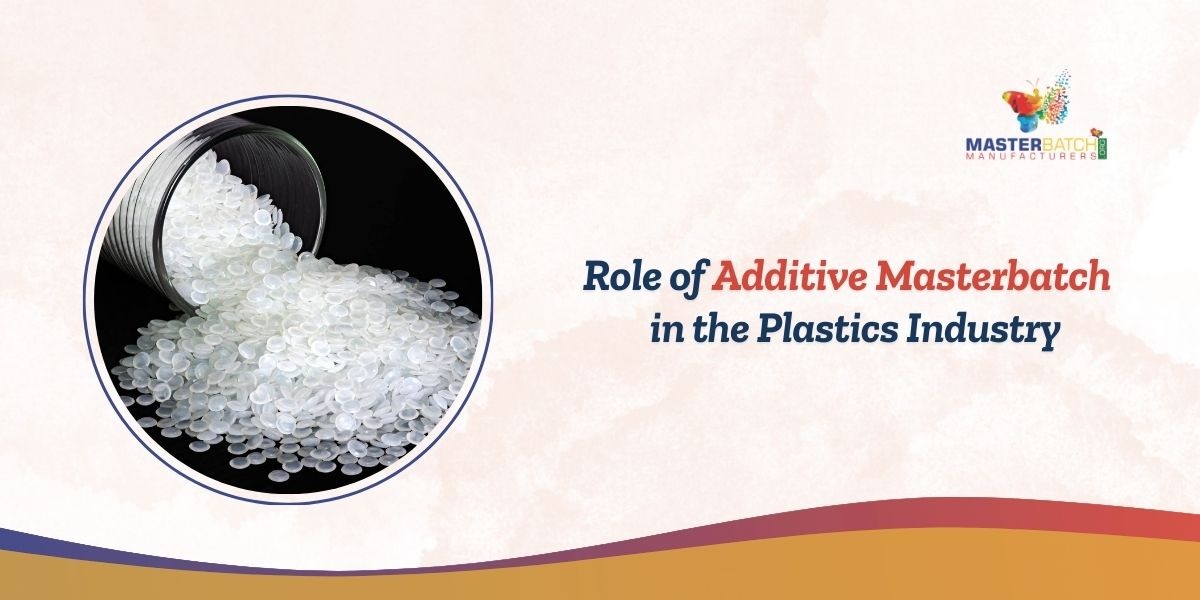Role of Additive Masterbatch in the Plastics Industry
The plastics sector is continually changing, impacted by innovation, efficiency requirements, and the need for superior materials. additive masterbatch plays a crucial function in this evolution. This distinctive mixture of elements greatly enhances the characteristics of plastics, boosting their strength, applicability, and flexibility.
In this blog, we’ll examine how it works, the benefits it provides for plastic products, and why it’s gaining popularity in various industries.
Understanding Additive Masterbatch
A concentrated mixture of resins, pigments, and additives used to improve the qualities of plastic is called an Additive Masterbatch. Melt-blending into a polymer carrier ensures a simple and dependable application.
These masterbatches change plastic’s UV resistance, flame retardancy, and surface characteristics. Due to their versatility, they are essential to manufacturing plastics, improving performance for various applications in many industries.
Types of Masterbatch and Their Functions
Additive masterbatch is available in multiple forms. Each intended to tackle specific challenges faced by producers in different sectors. The following is a list of some of the most prevalent types and their uses:
- UV Masterbatch: In outdoor applications, protect plastics from UV rays to avoid fading and breaking.
- Anti-Slip Masterbatch: Increase surface friction to stop slippage during handling and packaging.
- Flame Retardants Masterbatch: Reduce flammability, enhancing safety in automotive and electronics.
- Antioxidants Masterbatch: In long-term applications, stop oxidation from maintaining the colour and integrity of the plastic.
- Antimicrobial Masterbatch: Prevent the growth of microorganisms, guaranteeing hygienic products such as food packaging and medical equipment.
Enhancing the Performance and Longevity of Plastic Products
The performance and durability of plastic products are greatly improved by additive masterbatch. Manufacturers can customise the final product’s qualities to satisfy particular needs by carefully choosing and combining the appropriate additives. It enhances plastic performance in several important areas, including:
- Improved Durability: By protecting polymers from environmental elements like sunlight and oxygen, additives like UV stabilisers and antioxidants extend their lifespan.
- Enhanced Functionality: In industrial applications, additives like flame retardants and anti-slip compounds help plastic materials meet safety regulations and improve handling.
- Customisation: Manufacturers can use masterbatches to produce plastic products with certain qualities, such as colour, texture, and surface finish, to meet the demands of different industries.
Applications Across Sectors
Applications for additive masterbatch can be found in many different industries, including consumer goods, automotive, and packaging. Here are a few instances:
- Packaging: Masterbatches improve barrier qualities, appearance, and UV protection in food and beverage packaging to maintain product quality.
- Automotive: It is used in the automotive sector to create solid plastic components resistant to mechanical stress and high temperatures. Masterbatches containing flame retardants are essential for passenger safety.
- Consumer Goods: Electronics, toys, and storage containers are among the household products made with it. Adding chemicals that increase their longevity and aesthetic appeal often benefits these products.
Advantages Over Traditional Methods
Compared to more conventional techniques like pre-mixing or direct application, additive masterbatches provide several benefits. Among these benefits are:
- Consistency: Masterbatches ensure constant performance during large production runs by distributing ingredients uniformly.
- Ease of Use: It simplifies the manufacturing process by being simple to handle, mix, and integrate into the production cycle.
- Cost-Effectiveness: Masterbatches can be less expensive than adding individual additives since they eliminate the need for additional processing stages and material waste.
Environmental Impact and Sustainability
The plastics sector is becoming increasingly concerned about sustainability, and masterbatch producers are putting more effort into producing ecologically friendly products. Masterbatch supports sustainability in several ways, such as:
- Reduced Additive Waste: Manufacturers can minimise waste and excessive additive use by combining additions into a master batch.
- Recyclability: Some masterbatches are designed to be compatible with recycling processes so that plastic items can be recycled when their useful lives are ending.
- Bio-based Additives: Few producers are providing masterbatches with bio-based additives in response to the increasing demand for sustainable materials, which lessen the environmental impact of plastic products.
Making biodegradable masterbatches is another innovative idea that can help reduce plastics’ negative environmental effects. These developments bridge the gap between sustainability and performance, enabling the industry to create high-performance polymers with less of an adverse effect on the environment.
Final Words
An additive masterbatch is essential for increasing plastic goods’ sustainability, usefulness, and durability across various industries. In modern plastic manufacturing, it is crucial to provide flexible solutions for specific performance needs.
Innovation in masterbatch will continue driving the growing need for high-performance, environmentally friendly polymers. Analysing the possibilities could help businesses looking to raise the standard of plastic products.
Collaborating with reputable Master Batch Manufacturers can meet particular needs and stay ahead of industry trends.
FAQs
1. What is the role of additives in plastics?
Ans. Plastic additives improve the overall performance of a material for a given application by enhancing qualities like strength, flexibility, durability, UV resistance, and processability.
2. What additive is added to plastic during manufacturing to give it colour?
Ans. To ensure product identification and aesthetic appeal, colourants, such as pigments and dyes, are added to plastics during production to give them the desired colours.
3. What is the purpose of adding additives?
Ans. Additives enhance plastic qualities, including flexibility, strength, fire retardancy, and UV resistance. For certain end-use requirements, they also maximise lifespan, processing speed, and performance.
4. What are dual-use additives in plastic?
Ans. Dual-use additives improve performance and safety by serving several functions, such as stabilising or lubricating while offering UV or fire resistance.
5. What additives are used to make plastic biodegradable?
Ans. Additives such as starch, polyesters, or organic compounds are used to make biodegradable plastics, which encourage disintegration through microbial activity and gradually reduce their adverse environmental effects.
Follow us on Facebook for the latest updates!




